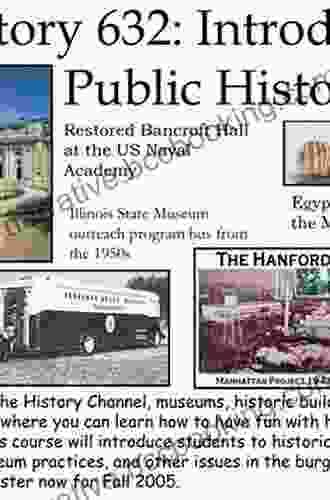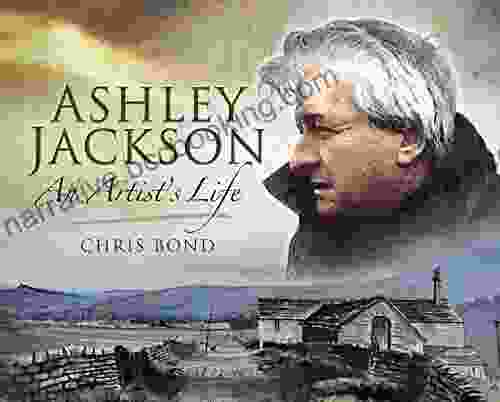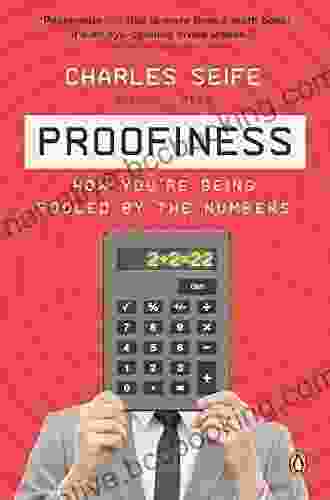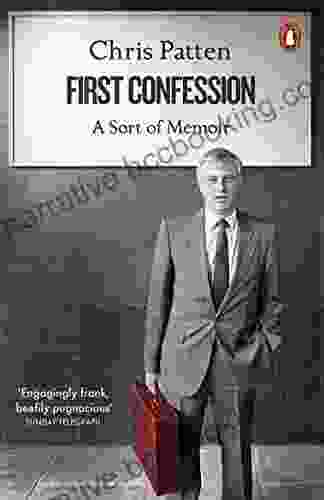Interpreting the Past: Engaging Audiences Through the Power of History

History, with its tapestry of events and unraveling tales, holds the power to capture our imaginations and transport us to distant times. But how do we effectively convey the significance of historical narratives to captivate contemporary audiences? The answer lies in the art of historical interpretation, a craft that transforms the cryptic whispers of the past into compelling stories that resonate with the present.
4.5 out of 5
| Language | : | English |
| File size | : | 22698 KB |
| Text-to-Speech | : | Enabled |
| Screen Reader | : | Supported |
| Enhanced typesetting | : | Enabled |
| Word Wise | : | Enabled |
| Print length | : | 330 pages |
The Essence of Historical Interpretation
Historical interpretation is the process of unlocking the meaning and relevance of the past for today's audiences. It involves selecting, presenting, and narrating historical events, artifacts, and sites in a way that fosters understanding, emotional connection, and critical thinking.
At its core, historical interpretation is a form of translation. It renders the complexities of the past accessible to contemporary minds, bridging the gap between the distant and the present. By deciphering the motives of historical actors, unraveling the significance of bygone eras, and drawing parallels to modern-day issues, interpreters give new life to history, making it relevant and engaging for audiences.
Effective Strategies for Engaging Interpretation
Engaging interpretation goes beyond the mere recitation of facts and dates. It requires a judicious combination of techniques, such as:
- Storytelling: The power of narrative captivates audiences, drawing them into the human drama of historical events. By crafting compelling stories that evoke emotions and resonate with personal experiences, interpreters connect the past to the present, making it relatable and meaningful.
- Multi-perspectivity: History is a tapestry woven with multiple threads, each representing a different perspective. Effective interpretation acknowledges these diverse viewpoints, presenting a balanced and nuanced portrayal of events. By considering the motivations, biases, and experiences of various historical actors, audiences gain a more comprehensive understanding of the past.
- Sensory Engagement: The senses are powerful gateways to the past. Engaging interpretation appeals to multiple senses, immersing audiences in the sights, sounds, smells, tastes, and textures of historical eras. Through hands-on activities, interactive exhibits, and evocative descriptions, interpreters create a multisensory experience that transports audiences to the past.
- Relevance and Connection: Historical interpretation is not merely an academic exercise; it seeks to foster connections between the past and the present. By drawing parallels to contemporary issues, highlighting lessons learned from history, and exploring the ways in which the past continues to shape the present, interpreters make history relevant to the lives of audiences.
- Technology and Innovation: Technology offers innovative tools for engaging audiences with history. Virtual reality, augmented reality, interactive maps, and multimedia installations can enrich interpretation, providing immersive experiences that bring the past to life.
The Impact of Historical Interpretation
When effectively executed, historical interpretation has a profound impact on audiences. It:
- Enhances Historical Literacy: Historical interpretation promotes understanding of the past, fostering historical literacy and critical thinking skills. By interpreting historical events in context, audiences develop a deeper appreciation for the complexities of the human experience and the forces that have shaped our world.
- Cultivates Empathy and Understanding: By stepping into the shoes of historical actors, audiences develop empathy and a greater understanding of different cultures, perspectives, and motivations. Interpretation fosters a sense of shared humanity, bridging the divides of time and space.
- Preserves Cultural Heritage: Historical interpretation plays a vital role in preserving cultural heritage by safeguarding and transmitting the stories, values, and traditions of past generations. By interpreting historical sites, artifacts, and narratives, we ensure that these precious legacies remain accessible and meaningful for future generations.
- Promotes Tourism and Education: Engaging historical interpretation attracts visitors to historical sites, museums, and heritage destinations, supporting tourism and cultural industries. It also serves as a valuable educational tool, complementing traditional classroom instruction and enriching students' understanding of the past.
Interpreting the past is an art that requires creativity, empathy, and a deep understanding of history. By employing effective strategies and embracing the latest innovations, interpreters can create compelling narratives that capture the imagination and resonate with contemporary audiences. Through historical interpretation, we unlock the treasures of the past, fostering historical literacy, cultivating empathy, preserving cultural heritage, and inspiring future generations.
If you seek to engage audiences with the richness of history, discover the captivating world of historical interpretation. Join the ranks of those who delve into the annals of time and bring the past to life for the present, creating meaningful connections that transcend the boundaries of time.
4.5 out of 5
| Language | : | English |
| File size | : | 22698 KB |
| Text-to-Speech | : | Enabled |
| Screen Reader | : | Supported |
| Enhanced typesetting | : | Enabled |
| Word Wise | : | Enabled |
| Print length | : | 330 pages |
Do you want to contribute by writing guest posts on this blog?
Please contact us and send us a resume of previous articles that you have written.
 Book
Book Novel
Novel Page
Page Chapter
Chapter Text
Text Story
Story Genre
Genre Reader
Reader Library
Library Paperback
Paperback E-book
E-book Magazine
Magazine Newspaper
Newspaper Paragraph
Paragraph Sentence
Sentence Bookmark
Bookmark Shelf
Shelf Glossary
Glossary Bibliography
Bibliography Foreword
Foreword Preface
Preface Synopsis
Synopsis Annotation
Annotation Footnote
Footnote Manuscript
Manuscript Scroll
Scroll Codex
Codex Tome
Tome Bestseller
Bestseller Classics
Classics Library card
Library card Narrative
Narrative Biography
Biography Autobiography
Autobiography Memoir
Memoir Reference
Reference Encyclopedia
Encyclopedia Catherine Mccann
Catherine Mccann Christopher Ellison
Christopher Ellison Christopher Vuk
Christopher Vuk Chris Bishop
Chris Bishop Celeste Headlee
Celeste Headlee Cinda Williams Chima
Cinda Williams Chima Charlotte Milner
Charlotte Milner Cheryl Pallant
Cheryl Pallant Celia Lyttelton
Celia Lyttelton Chris Willis
Chris Willis Chris Lundgren
Chris Lundgren Charles Butler
Charles Butler Charbak Dipta
Charbak Dipta Charles Szypszak
Charles Szypszak Charlotte Dunford
Charlotte Dunford Celesta Thiessen
Celesta Thiessen Cheng Liu
Cheng Liu Chaz Van Heyden
Chaz Van Heyden Charles W Mulford
Charles W Mulford Charles Schwab
Charles Schwab
Light bulbAdvertise smarter! Our strategic ad space ensures maximum exposure. Reserve your spot today!
 Rex HayesFollow ·10.5k
Rex HayesFollow ·10.5k Luke BlairFollow ·4.5k
Luke BlairFollow ·4.5k Jake PowellFollow ·19.1k
Jake PowellFollow ·19.1k Isaac BellFollow ·3.2k
Isaac BellFollow ·3.2k Brody PowellFollow ·19k
Brody PowellFollow ·19k Darren NelsonFollow ·8.6k
Darren NelsonFollow ·8.6k Curtis StewartFollow ·2.5k
Curtis StewartFollow ·2.5k Allan JamesFollow ·8.1k
Allan JamesFollow ·8.1k
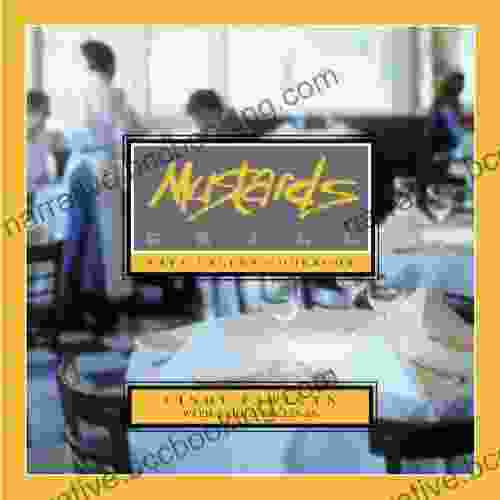
 J.R.R. Tolkien
J.R.R. TolkienEscape to the Culinary Paradise: "Truck Stop Deluxe In...
Prepare your palate for an...

 Andres Carter
Andres CarterA Taste of the Unusual: Discover the Enchanting World of...
Prepare to be captivated by "Cindy Supper...

 Nick Turner
Nick TurnerChild Obesity: Introducing the Idea of Healthy Weight
Child obesity is a serious...
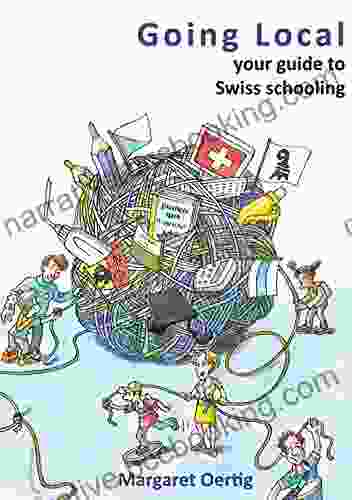
 Junot Díaz
Junot DíazGoing Local: Your Ultimate Guide to Swiss Schooling |...
In the heart of Europe, Switzerland boasts a...
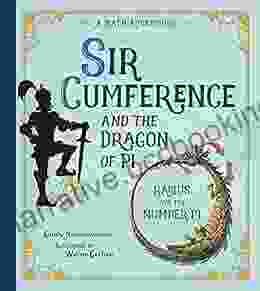
 Raymond Parker
Raymond ParkerSir Cumference and the Dragon of Pi: A Mathematical Fable
In the enchanting realm of...

 Thomas Powell
Thomas PowellUnveiling the Enchanting Realm of Curious Creatures from...
Russian folklore is a rich tapestry of...
4.5 out of 5
| Language | : | English |
| File size | : | 22698 KB |
| Text-to-Speech | : | Enabled |
| Screen Reader | : | Supported |
| Enhanced typesetting | : | Enabled |
| Word Wise | : | Enabled |
| Print length | : | 330 pages |


